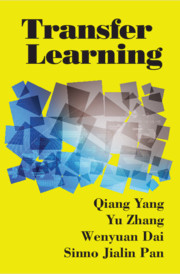Refine search
Actions for selected content:
2327 results in Pattern Recognition and Machine Learning
Part Four - Classification
-
- Book:
- Data Mining and Machine Learning
- Published online:
- 07 February 2020
- Print publication:
- 30 January 2020, pp 467-468
-
- Chapter
- Export citation
10 - Sequence Mining
- from Part Two - Frequent Pattern Mining
-
- Book:
- Data Mining and Machine Learning
- Published online:
- 07 February 2020
- Print publication:
- 30 January 2020, pp 261-281
-
- Chapter
- Export citation
Index
-
- Book:
- Data Mining and Machine Learning
- Published online:
- 07 February 2020
- Print publication:
- 30 January 2020, pp 755-766
-
- Chapter
- Export citation
17 - Clustering Validation
- from Part Three - Clustering
-
- Book:
- Data Mining and Machine Learning
- Published online:
- 07 February 2020
- Print publication:
- 30 January 2020, pp 426-466
-
- Chapter
- Export citation
1 - Data Matrix
- from Part One - Data Analysis Foundations
-
- Book:
- Data Mining and Machine Learning
- Published online:
- 07 February 2020
- Print publication:
- 30 January 2020, pp 3-28
-
- Chapter
- Export citation

Transfer Learning
-
- Published online:
- 24 January 2020
- Print publication:
- 13 February 2020
5 - Machine Learning
-
- Book:
- Foundations of Data Science
- Published online:
- 17 January 2020
- Print publication:
- 23 January 2020, pp 109-158
-
- Chapter
- Export citation
Contents
-
- Book:
- Foundations of Data Science
- Published online:
- 17 January 2020
- Print publication:
- 23 January 2020, pp v-viii
-
- Chapter
- Export citation
References
-
- Book:
- Foundations of Data Science
- Published online:
- 17 January 2020
- Print publication:
- 23 January 2020, pp 411-420
-
- Chapter
- Export citation
6 - Algorithms for Massive Data Problems: Streaming, Sketching, and Sampling
-
- Book:
- Foundations of Data Science
- Published online:
- 17 January 2020
- Print publication:
- 23 January 2020, pp 159-181
-
- Chapter
- Export citation
7 - Clustering
-
- Book:
- Foundations of Data Science
- Published online:
- 17 January 2020
- Print publication:
- 23 January 2020, pp 182-214
-
- Chapter
- Export citation
11 - Wavelets
-
- Book:
- Foundations of Data Science
- Published online:
- 17 January 2020
- Print publication:
- 23 January 2020, pp 341-359
-
- Chapter
- Export citation
10 - Other Topics
-
- Book:
- Foundations of Data Science
- Published online:
- 17 January 2020
- Print publication:
- 23 January 2020, pp 318-340
-
- Chapter
- Export citation
1 - Introduction
-
- Book:
- Foundations of Data Science
- Published online:
- 17 January 2020
- Print publication:
- 23 January 2020, pp 1-3
-
- Chapter
- Export citation
9 - Topic Models, Nonnegative Matrix Factorization, Hidden Markov Models, and Graphical Models
-
- Book:
- Foundations of Data Science
- Published online:
- 17 January 2020
- Print publication:
- 23 January 2020, pp 274-317
-
- Chapter
- Export citation
8 - Random Graphs
-
- Book:
- Foundations of Data Science
- Published online:
- 17 January 2020
- Print publication:
- 23 January 2020, pp 215-273
-
- Chapter
- Export citation
3 - Best-Fit Subspaces and Singular Value Decomposition (SVD)
-
- Book:
- Foundations of Data Science
- Published online:
- 17 January 2020
- Print publication:
- 23 January 2020, pp 29-61
-
- Chapter
- Export citation
Frontmatter
-
- Book:
- Foundations of Data Science
- Published online:
- 17 January 2020
- Print publication:
- 23 January 2020, pp i-iv
-
- Chapter
- Export citation
4 - Random Walks and Markov Chains
-
- Book:
- Foundations of Data Science
- Published online:
- 17 January 2020
- Print publication:
- 23 January 2020, pp 62-108
-
- Chapter
- Export citation
2 - High-Dimensional Space
-
- Book:
- Foundations of Data Science
- Published online:
- 17 January 2020
- Print publication:
- 23 January 2020, pp 4-28
-
- Chapter
- Export citation
